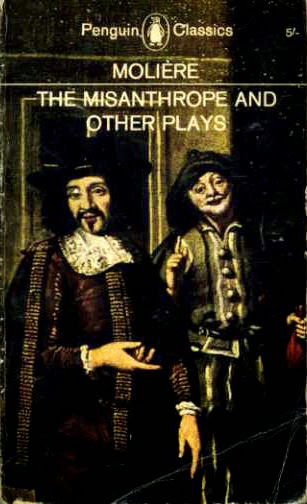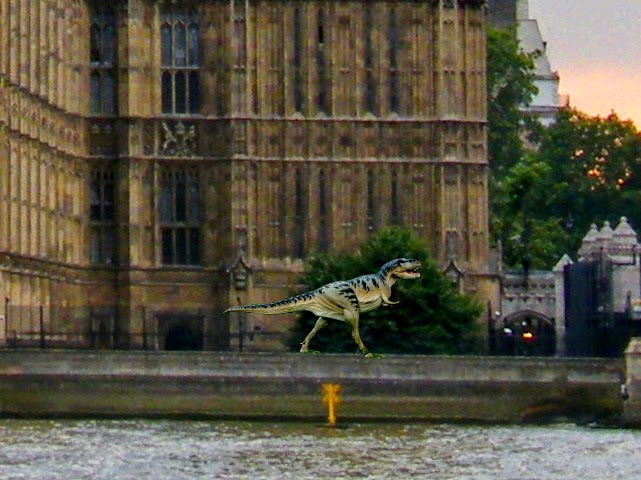Rules: List 10 books that have stayed with you in some way. Don't take more than a few minutes and don't think too hard - they don't have to be the "right" or "great" works, just the ones that have touched you. Tag 10 friends (or as many as you think would be interested to play) including me, so I'll see your list.
Tales from Shakespeare Volume 1 — Mary and Charles Lamb
My Grandma gave me a hefty, hardcover copy of this when I was about 8 years old and it began a life-long love of Shakespeare. Romeo and Juliet was my early favourite because tragic love story!The Moon is Hell! — John W. Campbell
I discovered this in a second-hand bookshop when I was about 8 years old and the title seemed very naughty. It was very different from any other sci-fi I had read up to that point: it's the story of astronauts trying to survive on the moon after a spacecraft crash, as their food and oxygen run low. Many of the expedition don't make it, and I still have vivid memories of the survivors' fingernails, hair, and teeth falling out as their predicament becomes more dire. It all seemed very real and dangerously exciting to me. It was probably also an early influencer in my preference for all-round capable explorers as characters, a hallmark of Campbell's writingCosmos — Carl Sagan
I'll admit that I saw the TV series first. It was broadcast late at night (9:30? 10:00?) on ABC TV in 1982 when I was 10 years old. I was spellbound, staying up late to watch it and make cassette-tape recordings of Sagan's wise and sonorous voice. I remember saving a *lot* of pocket money to buy this book! I think it was $24.95 -- a king's ransom back then (and about $80 in today's money, if I'm indeed remembering right! Could it really have been so?) So not only did I listen to the audio tapes over and over and over again, but I had the visuals in this book (plus lots of other interesting marginalia that didn't make it to TV).The World of Star Trek — David Gerrold
I found this in a remainder bin of paperbacks at our local Woolworths when I was 10, and it was like stumbling across the Holy Grail being used as a doorstop. This is a book about the behind-the-scenes of how the show came to be made, and about the global fan phenomenon that it had sparked. It was one of the first pieces of evidence I had that other people existed who had interests similar to mine. It also had a complete list of all the episodes! I will never be able to explain to the internet age what a find that was... but I can say that it would be nearly ten years before I came across another such list. I probably learned the word "marijuana" from this book.Лётчики-космонавты СССР (Pilot-cosmonauts of the USSR) — anonymous
Only loosely a "book", this is a folio of several dozen cards, each with a nice portrait of a Soviet cosmonaut and a biography in Russian. I bought this from a UQ book sale when I was about 10 or 11 (I don't know whether this was already the Alumni book sale that still happens today, but it was something similar). I was attracted by the Soyuz rocket on the cover and by the portraits of a few cosmonauts I recognised (Gagarin, Tereshkova, Leonov) but I was mostly intrigued that I wanted so badly to know what the text said and I couldn't even read the script! These cards provided many hours of intense fascination with a Russian-English dictionary over the next few years as I struggled to extract small snippets of sense from them. This made me very interested in how languages work.Animal Farm — George Orwell
I read this at about age 13 and it has been utterly unforgettable. I believe that so much human nature (and much of human politcs) is captured in this simple tale. It has furnished me a lens through which I understand humans as political animals and to which I constantly turn for insight. Enough said.Sir Gawayn and þe Grene Knyȝt (Sir Gawain and the Green Knight) — anonymous, late 14th century
For whatever reason, I've been drawn to the obscure and the esoteric practically my whole life. So I hadn't been long at university before I abandoned my engineering studies to study mediaeval literature instead. When I was 18, I discovered this poem in one of my classes and it was like a religious experience to me. Sir Gawain's attempt to (and, ultimately, failure to) uphold and balance both the laws of chivalry and those of courtly love resonated with me like little else has before or since. I sometimes point to this as what is, to me, the pinnacle of English literature.Preludes and Nocturnes — Neil Gaiman
I came to Neil Gaiman's comic The Sandman late. Probably the only component of geek culture that has never really appealed to me is the superhero, so I haven't followed many comics (and those I have have been mostly tie-ins to favourite TV or movie franchises). So by the time The Sandman appeared on my radar, it had already been going for about 4 years and was already being collected into graphic novels. I read these voraciously! They made me re-appraise comics as a storytelling medium and I was amazed by Gaiman's breadth of literary and historical allusion. I had a real "I am not worthy" feeling while reading these. The Sandman made me a life-long Gaiman fan, and I'm still waiting for the next comic to have the same effect on me.Tartuffe — Molière
I have such a vivid memory of reading this for the first time at around age 20. I was sitting on the back steps of my family home reading this and laughing out loud again and again. I was struck by the savagery of the satire and delighted by Molière's uncompromising attack on hypocrisy. (I think I already found this the most routinely amusing of human qualities). But moreover, I was conscious at the time of the humour crossing time, space, and language (I was reading in translation). I was new to Molière and what a joyful discovery this was!The Time Traveler's Wife — Audrey Niffenegger
I started this list with tragic love story and I finish with the same. No book has ever made me weep like this book made me weep. I love it for the brilliance of its premise, and its ability to manipulate my emotions so thoroughly and completely. I read it not long after it was published, so it's been with me ten years. I've not yet re-read it, because I'm a little fearful of its dark magic!Honourable mention
Growing up before video recorders were common in Australian homes, I re-lived favourite movie and TV experiences through the novels that inspired them, or which were published as novelisations afterwards. Three paperbacks that I read over and over again until they literally disintegrated were Peter Benchley's Jaws (I don't like the ocean for a number of reasons, and this is one of them) William Peter Blatty's The Exorcist and Alan Dean Foster's novelisation of Star Wars (writing under George Lucas' name) -- the first line of this is sheer poetry: "It was a vast, shining globe and it cast a light of lambent topaz into space—but it was not a sun."I also wished I could have included The Silmarillion. Probably Chariots of the Gods? too. Oh, and James Blish's original Star Trek novel, Spock Must Die!















